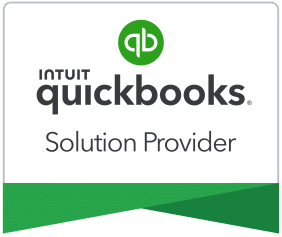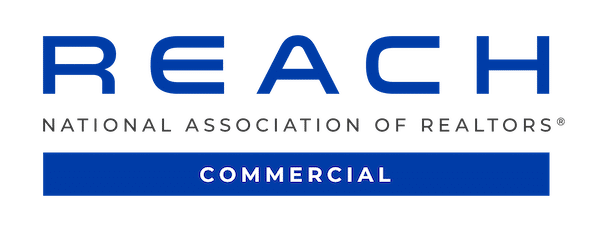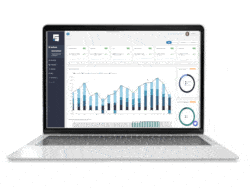Common Area Maintenance Reconciliation, or CAM reconciliation, can be time-consuming and intricate. Still, annual CAM reconciliation is essential for landlords to realize the full profits from their investments.
When selling a commercial property there is a risk of loss to a seller or buyer on under-calculated or over-calculated CAM charges. This risk increases significantly when the landlord hasn’t performed an annual CAM reconciliation. Another problem for the buyer in this instance is tenant disputes over miscalculated CAM charges.
Interested in commercial real estate investing? Use this helpful guide to learn how CAM reconciliation works for you, your tenants, and the previous owner as well as how to avoid legal problems.
What is CAM?
Common area maintenance (CAM) charges are the fees commercial tenants pay in addition to base rent. CAM can include costs such as janitorial services, snow removal, security, landscaping, window washing, trash pickup, pest control, liability insurance, real estate taxes, and water/sewer and other utilities.
CAM expenses are determined by the terms of a lease and may vary from tenant to tenant. Some tenants may negotiate exclusions from specific CAM charges. This complicates matters for landlords during annual CAM reconciliations and when they sell the property.
How are CAM Charges Calculated?
In a net lease, the tenant pays CAM charges according to their proportionate share of the building. To calculate the percentage of annual CAM charges for each tenant, divide the square footage of a tenant’s space by the building’s total square footage.
In a full-service gross lease, the tenant pays a fixed monthly payment that includes both rent and CAM charges. Because the CAM charges are fixed, commercial landlords risk underpayment of CAM fees and, therefore, lost income. In order to avoid this, a tenant’s rent payment under a full-service gross lease is usually higher than under a net lease.
What is a CAM Reconciliation?
The process of CAM reconciliation trues up the actual CAM expenses with what the tenant has paid. Based on the actual cost of CAM, either the tenant owes the landlord the difference, or vice-versa if the tenant overpaid.
Why are CAM Reconciliations Complicated?
There are two aspects of CAM charges that can complicate the annual process of reconciliation. First, the exclusions each commercial tenant negotiates can make the process of CAM reconciliation time-consuming and difficult. The landlord should review each tenant’s lease and the property’s general ledger in order to calculate each tenant’s CAM charges accurately.
Second, a property owner may make a capital improvement to the property, such as a new roof or repaved parking area. If such an improvement lowers overall operating expenses, it may be a CAM charge, amortized over ten years.
Commercial real estate portfolio management software, like STRATAFOLIO, can simplify even the most complicated CAM reconciliations. Using a robust software to help with CAM reconciliation and help you save both time and money.
When are CAM Charges Calculated?
Do a CAM reconciliation at least once a year. Many landlords choose to calculate CAM charges around income tax season. Owners of office, retail, or industrial properties should prepare an accurate CAM statement each year in case a tenant demands an audit.
When are CAM Charges Due?
A landlord may charge tenants estimated CAM fees each month along with rent. Estimated fees are usually based on the prior year’s CAM charges. If CAM reconciliation shows that estimate undercharged tenants, tenants pay the difference. If the estimate overcharges tenants, the landlord either pays the difference to tenants or gives tenants rent credit in that amount.
Common Problems with CAM Charges and Acquiring Commercial Property
When buying or selling a property, reconcile the CAM before closing in order to accurately report the amount owed/paid by the current tenants. Error in CAM reconciliation when buying or selling a property can create problems for the new property owners. We describe some common problems that occur during property sales below.
- The seller under-calculates prorations, either undercharging tenants or forcing the buyer to charge more the following year, which may harm the landlord-tenant relationship.
- The seller over-calculates prorations, so the buyer has false expectations of the CAM charges they will receive from tenants in the new year and may even owe tenants.
- The seller failed to perform CAM reconciliations for the last two or three years. This adds a layer of complexity to the evaluation and purchase-negotiation processes. It is difficult to understand the overall finances of the property if the CAM reconciliations are not up-to-date.
- The seller failed to formally add tenant-specific exclusions to the lease agreement as an amendment. This is most often a problem when there is a one-time exclusion. When an exclusion is not recorded correctly, the the CAM charges will be incorrect.
Legal Problems with CAM Charges
The most common problem with CAM charges is disputes between landlords and tenants. Needless to say, these disputes harm the landlord-tenant relationship and should be avoided or negotiated rather than litigated whenever possible.
Previous Landlord Undercharged for CAM
If the previous landlord undercharged the tenants for CAM expenses and the new landlord tries to collect the past due CAM charges, a tenant may dispute that.
Previous Landlord Failed to Record CAM Exclusions Accurately
If a tenant refuses to pay CAM based on an informal or unrecorded CAM exclusion with the previous landlord, the landlord must decide whether to sue to collect.
Previous Landlord Failed to Define Common Areas and Responsibilities Accurately
Lease terms should include a list of the areas and the types of expenses covered in CAM charges. If the lease does not include this list, tenants can challenge CAM charges on that basis.
Avoiding Legal Battles Over CAM Charges
Buyers of commercial property who are new landlords should reconcile CAM or demand a CAM reconciliation prior to purchase. It is important to identify all overcharges and undercharges at the outset. Any of these problems can affect the value of the property as well as the purchase price. You can then build any loss from undercharging or overcharging for CAM into the purchase price. This will help avoid many of the CAM problems that impact the landlord-tenant relationship and open the door to litigation.
Sellers of commercial property should have an up-to-date CAM reconciliation so that they provide potential buyers with the amount and nature of the true, current CAM expenses covered by tenants. Failing to do so impacts the value of the property and invites accusations of fraud by a buyer.








